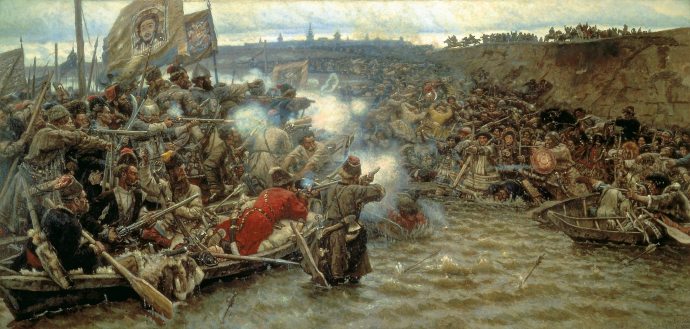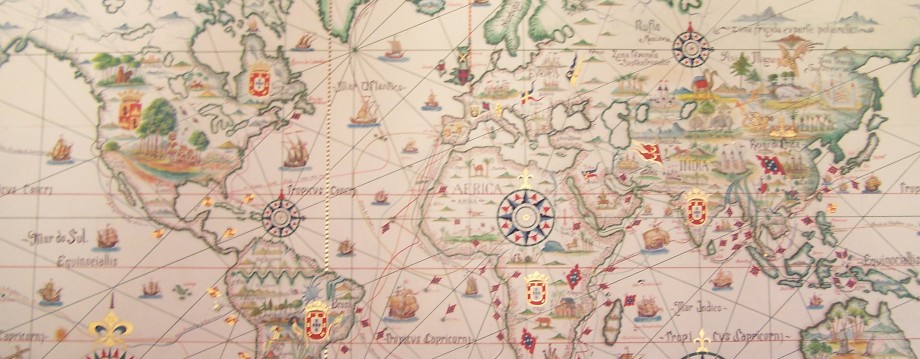My second post will take us again to North America. Why, will you ask?!? Well, there are at least a couple of reasons I can think of.
Primo, because this continent hosted many Poles. Some of them spent there only a few years, some of them stayed longer. A few will be remembered forever… hopefully.
Secundo, because USA is not on our list of countries to visit. I mean not during the Journey. The reason for that is money of course. Unfortunately, comparing to South-East Asia or South America, North American countries are simply too expensive for us.
We still want to visit both Canada and States, but this trip will have to wait. We dream of buying a car and driving through states. I’m sure many of you would like to do that and some of you have already done it… And even if we have mixed feelings about America (because of history, of course), it still is almost a magical place for Poles from my generation. As kids we watched American movies, learnt English from American movies (that would be American English then) and for many of us that was the greatest country in the world…
As I said, US are not on our list and I won’t be able to go there and take any pictures anytime soon, so at least I can write about Poles who helped build this country.
Today’s post is about a person well known among Poles and Americans, Casimir (Kazimierz) Pulaski, also called “the father of American cavalry”. Most people heard about his achievements in America, not many know about his heroic actions in Poland.

Casimir Pulaski
Kazimierz Michal Wladyslaw Wiktor (yup, 4 names) Pulaski (of Slepowron coat-of-arms) was born on 6th March 1745 in Warsaw. He was baptised at home as it was a common practice if the child was ill. He had 2 brothers and 6 sisters.
He grew up in Warka, where he went to school and later on he attended at the college of Theatines in Warsaw. After the college he became a page of Duke of Courland and witnessed Russian occupation of the area.
In 1764 he took part in the election of Stanislaw August Poniatowski but on 29th February 1768 he signed the pact of confederation in Bar against Russia and Polish king, who was seen as Russian puppet, against the attempts to limit the power of nobility, and to defend the Roman-Catholic Church. Prussia and Austria stayed neutral, but they eagerly joined Russia 4 years later in the First Partition of Poland. Casimir’s father, Jozef (Joseph) Pulaski, was one of the creators of the confederation and Casimir with his brother Franciszek (Francis) Ksawery became colonels (pulkownik).
Casimir was only 23 at that moment but 4 years later his military talents were well known in Europe. But those 4 years weren’t easy. He had many successes and failures: defending the fortress of Okopy Sw. Trojcy, many victorious skirmishes with Russians and king’s forces, holding Czestochowa and forcing Russian commander Drewicz to withdraw.

Pulaski at Czestochowa
The fighting ended in 1772 when insurgents (by many historians Bar Confederation is called the very first Polish Uprising) had to fight with Austrian forces, which decided to have a piece of cake as well. During the fights, Casimir’s father died, his brother was killed at the battlefield and Casimir for his role in an attempt to kidnap king Poniatowski was stripped of “all dignity and honors”, his possessions confiscated, and he was sentenced to death. With all that, Casimir had to seek refuge outside the country. The confederation failed, the puppet-king was still in charge, and foreign powers (Russia, Prussia and Austria) used the uprising as the pretext to the First Partition of Poland.
After 5 years of wandering he met Benjamin Franklin in Paris, who recommended him to George Washington. In a letter he wrote of Casimir: “Count Pulaski of Poland, an officer famous throughout Europe for his bravery and conduct in defence of liberty of his country…”.
On 23rd July 1777 Casimir arrived in America and in August met with Washington to explain his project of forming cavalry. During the Battle of Brandywine, he impressed Washington with his military talent and even saved Washington’s life. For that he was promoted to brigadier general of the American cavalry, which at that time was only few hundred-men strong and was used primarily for scouting duties. He also took part in the Battle of Germantown in October.
In 1778 Pulaski started organizing the cavalry (famous Pulaski Legion). It was a mixed unit of lancers and light infantry. He used his experience from Poland, where he was called by some the next Stefan Czarniecki (famous Polish guerrilla commander from seventeenth century). Quite often he used his own personal finances to buy equipment for the soldiers. He demanded much of his men and trained them in what he knew best – guerrilla war. Poor Brits didn’t know what was coming to them… In the same year the Moravian Sisters funded a banner for the Legion. Banner that was also called Pulaski’s Banner.
In 1779 Legion fought at Little Egg Harbor and Charleston. After that he arrived in besieged Savannah where on October 9th , during a cavalry charge he was wounded by grapeshot. His wounds were mortal and on 11th October 1779 he died aboard USS Wasp. He was buried at Greenwich plantation on 21st October.

Death of Pulaski at Savannah
On 17th November 1779 George Washington issued an order to identify friends and foes when crossing military lines: Query: Pulaski, Response: Poland. Later on that month Congress voted that a monument should be built in memory Count Pulaski. It was never done.
Pulaski is both Polish and American hero. During the Bar Confederation he led a successful guerrilla war against Russia and he died in America, defending freedom. Several times Pulaski impressed Washington and his officers with his skills and actions.
He has been called “the father of American cavalry” and 11th October is celebrated in USA as “General Pulaski Memorial Day”. Numerous statues of Pulaski exist. Over 200 cities and towns, many streets and bridges were named after him. A Polish transatlantic ship, US submarine and Polish Frigate were also named after General Pulaski.

Pulaski Day Parade in NYC
In 2009 Polish Parliament honoured Pulaski’s name. In the same year Pulaski obtained honorary U.S. citizenship, becoming seventh person so honoured.
He was one of the first Poles fighting “for your freedom and ours” outside Poland. Luckily he died before seeing Poland disappear from Europe map.
































